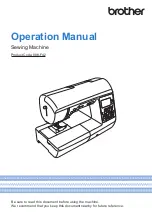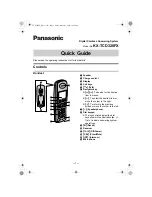
CONTENTS
vi
A
Appendix
Chapter 1 MAINTENANCE AND
TROUBLESHOOTING
2
Care and Maintenance.......................................... 2
Restrictions on oiling .............................................................. 2
Precautions on storing the machine ........................................ 2
Cleaning the LCD screen ........................................................ 2
Cleaning the machine surface ................................................ 2
Cleaning the race ................................................................... 2
Troubleshooting.................................................... 4
Frequent troubleshooting topics ............................................. 4
Upper thread tightened up ..................................................... 4
Tangled thread on wrong side of fabric .................................. 5
Incorrect thread tension.......................................................... 6
Fabric is caught in the machine and cannot be removed ........ 7
If the thread becomes tangled under the bobbin winder
seat ...................................................................................... 10
List of symptoms................................................................... 12
Error messages...................................................................... 18
Operation beep .................................................................... 19
Nothing appears in the LCD ................................................. 19
Index .................................................................. 20
Summary of Contents for 888-F42
Page 2: ...Cover2 3 PANTONE 285 C K ...
Page 41: ...Replacing the Presser Foot GETTING READY Basic operations B 33 B ...
Page 96: ...Decorative Stitching S 42 ...
Page 118: ...Cover2 3 PANTONE 285 C K ...
Page 119: ...Cover2 3 PANTONE 285 C K ...









































